It wasn’t a bad day today, weather wise. The predicted rain stayed in the clouds and the sun shone through. Stuck for something to do on a bank holiday, we elected to go for a walk – but where?
There are always ‘usual suspects’ in our routines, but I fancied to try and locate a part of one of my novels – the incline of the Hafan quarry, that was built to propel stone down to the valley by an inclined plane – to be taken away by the Plynlimon & Hafan tramway. Built around 1896, the tramway struggled to make ends meet and finally lost the battle in 1899. Not ten years later, a significant lead mine was started at Bwlch Glas and ironically was built over part of the tramway. The irony being that was the kind of business the tramway wanted to attract as customers.
I have been many times to the top of the incline. It really is a super view:
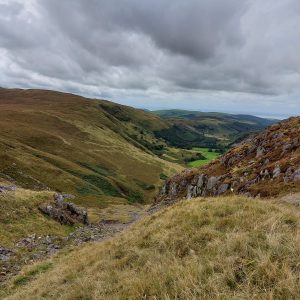
This is the top, mostly taken away when the quarry was used for stone to build nearby Nant y Moch reservoir.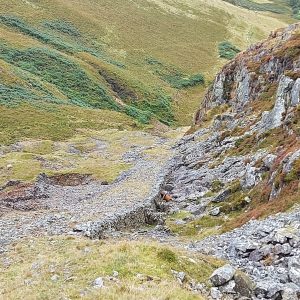
spec t
The picture above shows the incline dropping down. Today, I walked up the valley from Bwlch Glas lead mine, (having finally worked out the right country lane to take) It’s about a mile and a half, but still spectacular.
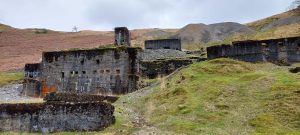
This is the early 1900s dressing mill of Bwlch Glas – mentioned in ‘A light in the Darkness’. The mine was built on the trackbed. You can see it as a horizontal line before the bracken. Ironic, as the tramway was built to service the Hafan quarry, but hoped to also get business from reopened lead mines. The timing was spectacularly wrong!
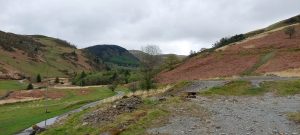
Looking down the valley. This platform was used by an episode of Hinterland, where they built a petrol station. 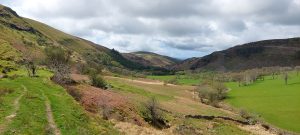
Looking down the valley westwards, the track bed is on the left.
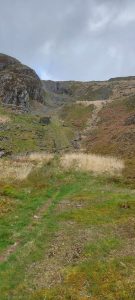
The bottom of the incline, featured in ‘By the Banks of the Rheidol’ . The reeds are on the site of the loop that marked the end of the tramway and the start of the incline.
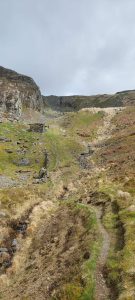
River erosion has taken its toll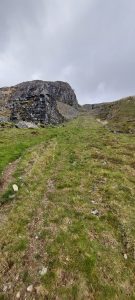
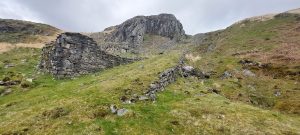
The stone work is spectacular!
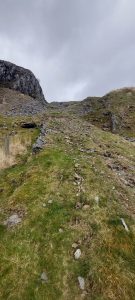
It’s a long steep climb!
‘A light in the Darkness’ is being finished and will imminently go to print. It is the final tale of Owain Thomas, the lead miner and features Dafydd, his railwayman son.